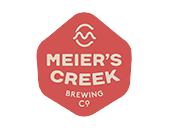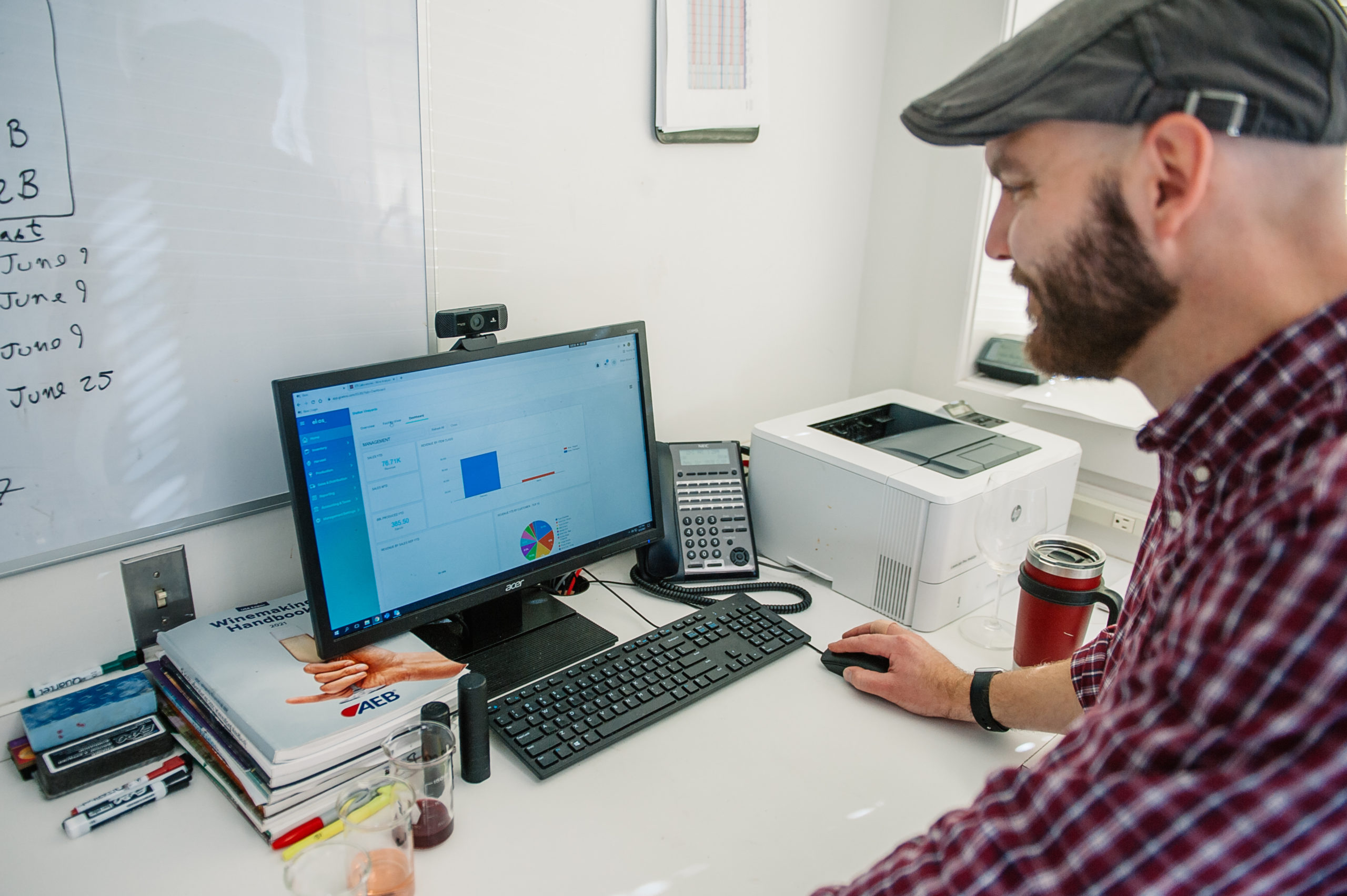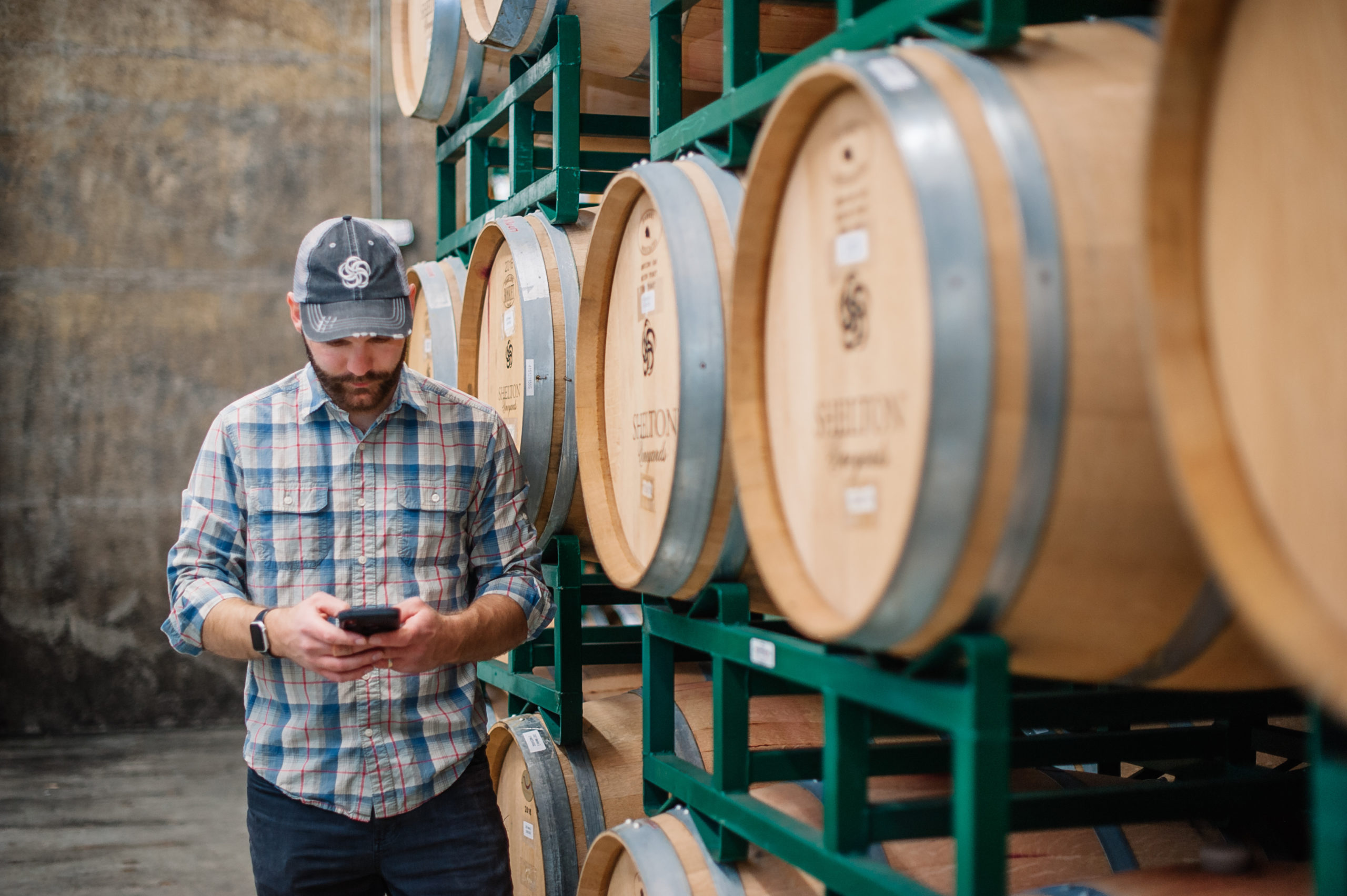With the global winery industry generating nearly $30 billion in annual sales, it’s difficult to succeed without an in-depth, nuanced business strategy in place. Leveraging the power of winery software offers a baseline that can help you optimize your wine production, but it’s only the beginning.
Using a comprehensive beverage ERP software can further streamline your entire operation, integrating advanced features designed to take your business to the next level.
When you find the right system and embrace the right strategy, you can drive efficiency, productivity, and—best of all—profitability. The following eight strategies can help you maximize the value of your software, justify your investment, and ultimately help drive your business toward long-term, sustainable success.
Strategy 1. Automate Inventory Tracking in Your Winery Software
Inventory tracking is a key part of the business optimization equation for any craft beverage producer, including wineries. When you streamline your inventory management, you’re halfway to streamlining your entire operation.
The right winery software can help you automate your inventory tracking. Production data syncs directly into the inventory, allowing winemakers to keep track of the exact time when new ingredients are needed. Better yet, some solutions even enable automated reordering at a certain threshold to avoid stockouts at any point.
Reporting also plays a direct role in the inventory equation. Whether for compliance or production forecasting, automated reports can help stakeholders gain key insights into their position in raw ingredients, bottles and other packaging materials, and finished wine. Set them up right, and you’ll always know exactly where your business is positioned with all types of inventory.
Strategy 2. Leverage Predictive Analytics
Speaking of reporting, a system that can track data across your entire winery also has the capability to turn that data into valuable insights. Look closely, and you might find a platform that can leverage predictive analytics, using the data gathered to provide demand forecasts and resource allocation.
Whether you’re starting a business plan or looking to go beyond the basics for your existing operation, predictive analytics can be invaluable for your winery business. Forecasting and data analysis enable you to plan ahead, making smarter decisions on anything, from ingredient orders to advertising investments, at just the right time.
Treat your winery management system as a true business intelligence platform. Your operations input the data needed to provide comprehensive, forward-facing insights you can use to take your business in the direction the data suggests.
Strategy 3. Establish Seamless Integrations With Accounting, POS, and CRM Software
There’s rarely a single software solution that can manage all components of running a business. Any comprehensive, industry-agnostic option isn’t optimized for wineries. Adopting a generic solution comes with shortcomings in this complex industry. What you can build, however, is comprehensive integration between your winery software and the external systems you use for essential functions not directly related to inventory or production. Examples include:
- Accounting system integration, which enables you to track your financial data without duplicating your information
- Sales and POS software integration, with sales data flowing directly into your inventory and predictive reporting to reorder as needed and establish buying trends
- CRM software, which helps you better track anyone, from your customers to your suppliers, across your system
Build these integrations to take your winery management to the next level. As technology adoption for better winery management continues to rise, software integration can help you move to a better system that streamlines management and operations, saving time and money.
Strategy 4. Implement Advanced Quality Control Features
Smaller wineries live and die by their ability to produce consistently high-quality products. A single bad batch could reduce trust and ultimately lose both distributors and customers. It’s a good thing that some winery software options have advanced quality control features designed to prevent that exact scenario from happening.
Some software options, for example, help you track the quality of your batches over time. Viewing historical data enables you to identify trends and potential needs for adjustment or areas of improvement, ultimately helping you produce better wine.
Quality control also extends to understanding exactly where your lots and batches are at any given time. That level of tracking allows you to rotate out batches when identified as past their date. Not only will your output consistently be high quality, but you can also ensure that your products remain that way by the time they get to consumers.
Strategy 5. Embrace Mobile Capabilities for Remote Access
Wineries may operate from a central location, but that setting is only one of the spots that matters. Sales at local craft fairs, satellite stores, and even trips to distributors or suppliers are likely part of your everyday operations and sales process. Your technology should be flexible enough to accommodate your needs.
Cloud-based winery software is the winner here. Remote access, regardless of device, enables you to retrieve your data and information at any given time. You can monitor your operations, understand current conditions, and improve your decision-making no matter your location.
This flexibility in access can also come in handy when considering the need for multiple stakeholders to access your data. As you branch into multiple locations, or even as your staff expands in one location, the ability for multiple team members to access the same information without duplicating files or data can become incredibly beneficial.
Strategy 6. Automate Your Compliance Reporting
Because of its alcohol components, producing and selling wine requires significant regulations at the local, state, and federal levels. These include a wide range of needs, from a license for production to additional requirements for selling directly to customers. Remaining in compliance with winery regulations can take hours out of any week that could otherwise be spent on producing wine and improving the business.
At the federal level, perhaps the biggest and most time-consuming compliance need is the Report of Wine Premises Operations required by the U.S. Tobacco Tax and Trade Bureau. This monthly report requires data on everything from raw materials sourcing and payments to fermentation timing, batch sales, and more.
Manually pulling this data is a significant time investment. The right winery software, on the other hand, can help you automatically pull the necessary data and process it in the appropriate format. Delivered to your inbox, this automated report can save up to 10 hours every month that can now be spent on the business instead.
Strategy 7. Calculate Your COGS and Profit Margins in Real Time
Ultimately, wineries are just like any other business in one critical aspect: no matter the quality of your product, you need a sufficient profit margin to sustain growth. That profit margin is only possible to track if you can comprehensively evaluate your cost of goods sold (COGS) and trust that the number is accurate so you can set your prices accordingly.
Look for software that helps you gather all data points needed to calculate your COGS: materials, labor, and overhead. A winery management system that collects this data should also be able to run the calculation for you, showing you exactly how much each bottle of wine you sell in a given period costs.
From there, it’s a natural step toward your profit margin. Integrate your software with your sales systems, and you’ll be able to show exactly how much each bottle sold for in that same period. Now, you can combine the two data points to calculate and evaluate your profit margin, letting you know exactly where your business stands and which side of the equation may require adjustments.
Strategy 8. Optimize Your Wine Distribution to Key Supply Partners
Finally, the relationships you build with your distributors will be crucial to business success, especially for wineries that don’t just sell directly to consumers. Winery software that helps build and manage those networks can be a massive boon contributing to your long-term success in business.
Organizing your partnerships starts with software that acts as a database for all your distributors. Ideally, you also need to go beyond by keeping track of inventory levels for each distribution partner. That overview allows you to automatically resupply as needed, preventing stockouts on their end while maintaining a steady income stream on yours.
Leverage Advanced Winery Software Features With an Industry-Leading Platform
As the winery industry continues to grow in size and competition, it’s time to go beyond the baseline. Advanced features, from predictive analytics to automated inventory management and compliance reporting, can help build efficiencies, enabling you to survive and thrive even on tight margins.Of course, leveraging these advanced features requires the right system. That’s where Ekos comes in, thanks to dedicated expertise for craft beverage makers on six continents. Book your demo today to see these features in action and learn how to optimize your winery management in the long term.




